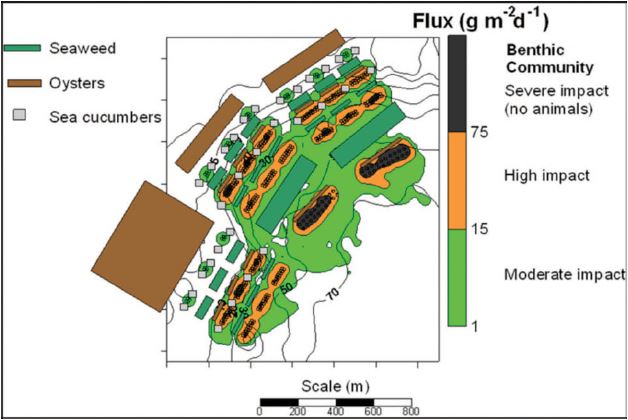3 Carrying capacity analysis
Establishment of any aquaculture structures and development of any coastal areas or municipal waters in the Philippines for production purposes strictly follows the environmental regulations imposed by the Department of Environment and Natural Resources and existing rules of the Bureau of Fisheries and Aquatic Resources.
Typically physicochemical parameters are also included in the carrying capacity analysis. During the Norwegian Agency for Development Cooperation (NORAD) funded project entitled “Planning and management of aquaculture parks for sustainable development of cage farms in the Philippines” (AquaPark, 2006), the project adapted the modelling environmental impact
Figure 6. Output from TROPOMOD for Panabo Mariculture Park.
of cages (TROPOMOD) model to assess sustainable carrying capacity for mariculture parks. TROPOMOD is a particle tracking model which simulates the dispersion of waste feed and waste faecal particles from fish cages. Using depth and current velocity data from environmental surveys and husbandry data such as cage layouts and feed ration from production surveys, TROPOMOD predicts flux of waste solids to the seabed (grams waste feed and faeces m2 seabed per day). This waste flux is related to a level of impact on the sediment benthos.
TROPOMOD was also used to predict flux and nutrient plume from the fish culture to various Integrated Multi-Trophic Aquaculture (IMTA) units. These predictions were used to locate IMTA units in optimum locations relative to the finfish culture and some estimations of IMTA production were made.
Output from TROPOMOD modelling indicating the optimal size and position of the recommended secondary IMTA production areas for Panabo Mariculture Park together with predicted benthic impact from the cage culture are shown in Figure 6 above.